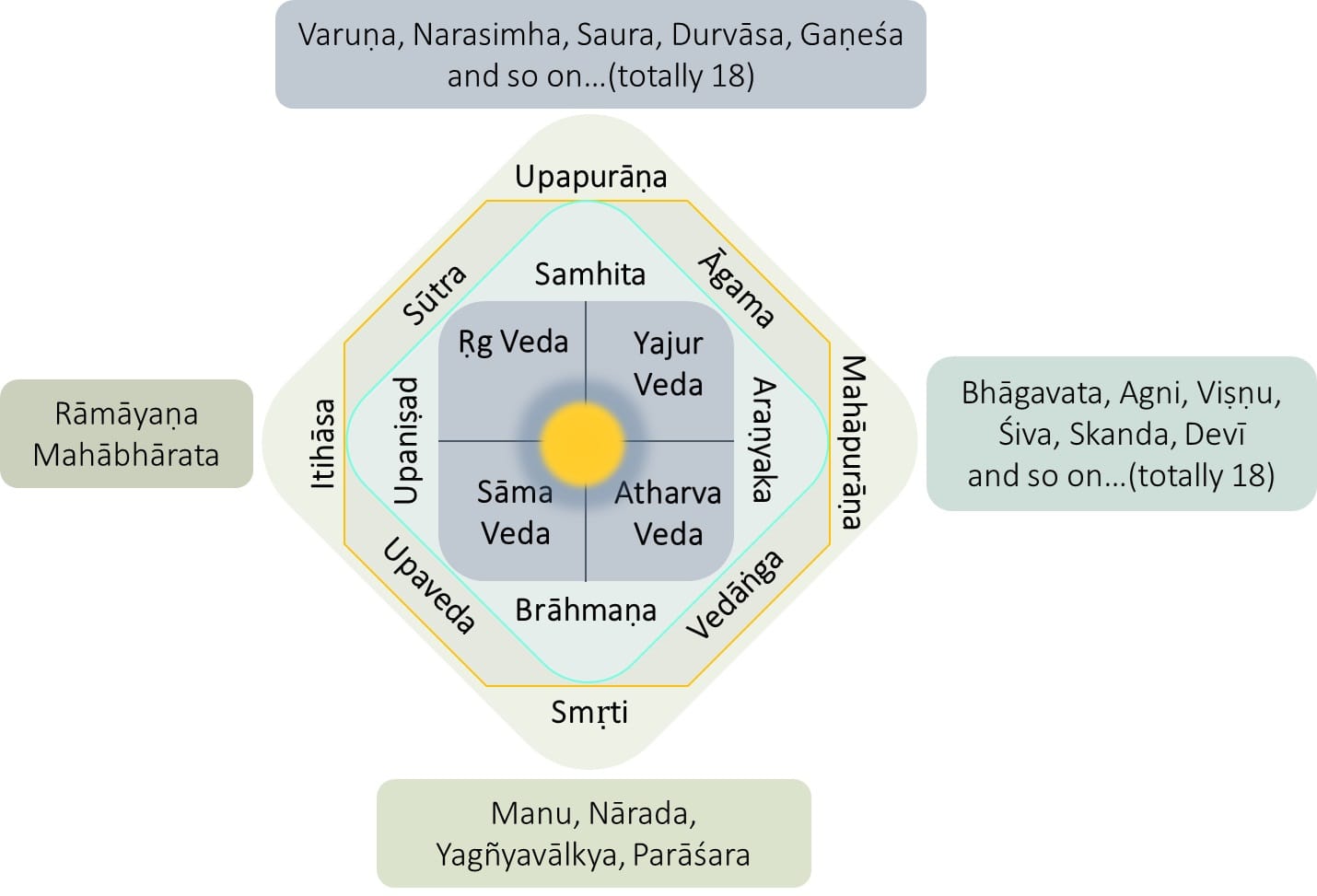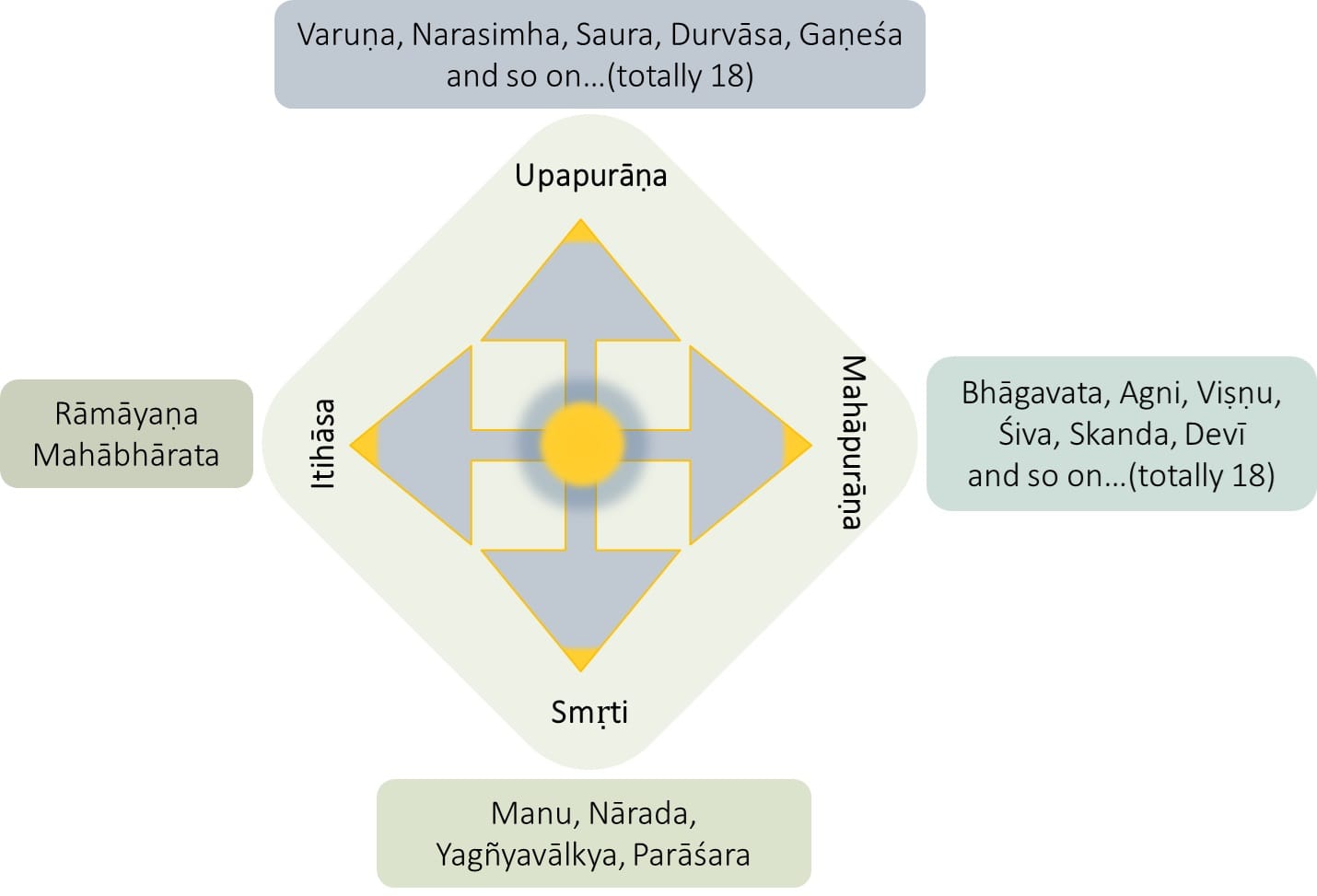Itihāsas: How are they the same as Dharma?

Part -1 can be read by clicking HERE.
In response to the NCERT coming up with the recommendation to include Rāmāyaṇa and Mahābhārata as part of history lessons, I had shown in the previous post why itihāsas are not the same as history and why they must not be included as part of the subject. “With the need to propagate the itihāsas, how else can they be done?” is the question that arises now.
At this point it is important to know why it is essential for us to know the itihāsas through this śloka from the Mahābhārata.
|
इतिहासपुराणाभ्यां वेदं समुपबृंहयेत्॥ बिभेत्यल्पश्रुताद्वेदो मामयं प्रतरिष्यति। -
Mahābhārata 1-1-293[1] |
Itihāsa Purāṇābhyam vedam samupabṛmhayet | Bibhetyalpaśrutād
vedo mām ayam pratariṣyati || |
which means-
The Vedas must be expounded through the use of Itihāsa-Purāṇa. Otherwise, it is feared that the less learned would misinterpret the Vedas.
This means that, the content of the Vedas are embedded in the Itihāsa-Purāṇa and are present in an easily digestible form. Therefore, in order to explain the content of the Vedas, one must resort to bringing about understanding through the content of Itihāsa-Purāṇa.
To show this, we have the following image. The first image shows knowledge through śruti which is gathered by the ṛṣis and compiled as the 4 Vedas. The Vedas are expounded through the various Upaniṣads, Samhitas, Brāhmaṇa, Araṇyakas, Sūtras, Āgamas, Vedāngas and the Upavedas. All these are ways to understand and practice the knowledge that is obtained through śruti.

However, there still exists a vast number of people whose access to this content is limited due to practical reasons. Thus, to the common man level the dharmik content from śruti is brought through the Itihāsas, Smṛtis and the Purāṇas.
All these contain the very same knowledge that the Vedas contain. A simpler way to show this truth would be through this image -

Therefore, the common man gets the clearest, simplest form in which Vedik knowledge can be taken. We see the importance of knowing the Itihāsas from this.
Until the British imposed the Western model of education upon us, the itihāsas were studied by everyone in all parts of our country. Dharampal in his seminal work ‘The Beautiful Tree’[2] shows documents that state this. We also see that practically all art forms be it painting, sculpting, music, theatre, dance, puppetry and so on, took up themes from the itihāsas and purāṇas. It was thus ensured that the least literate person in the remotest village had access to this knowledge through the itihāsas and purāṇas.
We now come to the question: Where must Rāmāyaṇa and Mahābhārata – the itihāsas – be placed? Itihāsas must be taken to the students as a separate sphere of learning, ‘Dharma’ and nothing less. This must be the core of education (at least) in the primary and middle school levels.
Jai Hind!
[CONCLUDED]
[1]Mahabharata (Kumbhaghonam Edition)
https://sanskritdocuments.org/mirrors/mahabharata/mbhK/mahabharata-k-01-sa.html
[2] Available free on the internet

